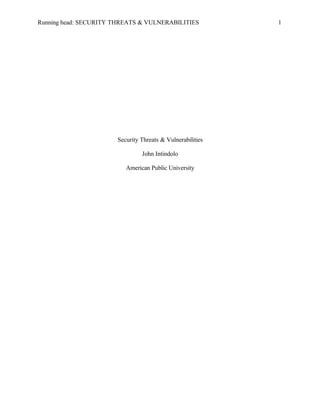This document discusses security threats and vulnerabilities. It begins by noting that threats and vulnerabilities are constantly changing with evolving technology. It defines threats as actions that could damage an asset, and vulnerabilities as weaknesses that allow threats to occur. The document then discusses how to identify important organizational assets and assess risks to them. Several types of threats are outlined, including human threats like errors, criminal behavior, and insider threats from employees. Common forms of malicious software like viruses, worms, Trojan horses, rootkits and spyware are also described. Strategies for reducing insider threats like monitoring, multi-person access, and job rotation are presented.










